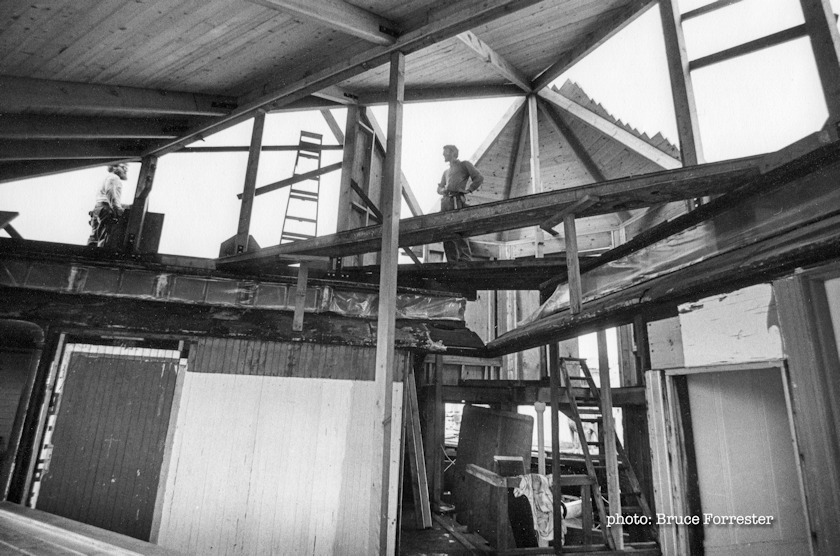
Poet, historian and builder Keith Emmons visited the Sausalito waterfront in 1970 with his wife Jane. They spotted an ad for a converted landing craft at Gate 3 and bought it for $1400. Later they moved onto the Fortune Cookie, built on another surplus landing craft. Then Keith got inspired to create a floating home out of a retired Pullman car. That home became the Train Wreck and is one of the most-photographed homes in our community. Keith has written a book about those early days on the waterfront, entitled Who Built the Train Wreck? Here are some excerpts detailing how this architectural wonder came about:
One day Jane handed me a classified clipped from the Pacific Sun:
“FREE — old railroad car. Must be moved.”
As our daughter lamented many years later, “My dad will accept anything free, no matter how much it costs.”
Called the number and took a look. Right where Blithedale Avenue exits the freeway north of San Francisco, there used to be a railroad corridor from Mill Valley to Tiburon. Directly next to the abandoned corridor sat a duplex. Sticking out of one end was the end of a wood railroad car. Later I learned it was built in 1889 as San Francisco & North Pacific Railroad Company carriage number 41. Decades before I first saw it, someone had draped it with sloped roofs on either side and rented it out as a duplex.
Once he took ownership of the car, Keith’s next challenge was how to convert it to a floating home. So he looked up Forbes Kiddoo, the pioneer builder of ferro–cement barges for floating homes, who was constructing his legendary floating island at the time. Keith recalls:
I asked him, “Say Forbes, I’m thinking of making a houseboat from a railroad car floating from a barge. Could you build a barge for that?’
“Why not?’ he said. “How big?”
I loved that attitude.
For the car’s orientation over the barge, I figured two halves were better than one. Like every aspect of building the Train Wreck, I had no idea how to cut a railroad car in half. But willpower was enough. I just progressed step-by-step.
Keith used a wrench and handsaw to do the job himself, by hand.
After Forbes launched the barge, Keith spent three and a half years repurposing the old rail car into a home, a process he describes in detail in his book. The last of this work took place on South Forty Pier, where the Train Wreck proudly floats today. It’s now owned by Henry Baer, past president of the Floating Homes Association.
When the book is published, we’ll announce it in our Boatload of Books column. It will be available at the Sausalito Library and Sausalito Books by the Bay.